Kimono and Rain
How a Wagasa Umbrella Transforms Your Experience in Kyoto
Visiting Kyoto is like stepping into a living museum of Japanese culture. The streets of Gion, Higashiyama, and Arashiyama are lined with wooden machiya houses, cobblestone alleys, and temples that have stood for centuries. While Kyoto is breathtaking in any season, rainy days offer a completely different perspective: softer light, shimmering stone pavements, and a romantic atmosphere that feels straight out of a classic Japanese painting.
Now imagine walking through Kyoto in a kimono, holding a wagasa (traditional Japanese umbrella). The rain no longer feels inconvenient—instead, it becomes part of the story, part of the art you embody. In this article, we’ll explore why a wagasa umbrella is more than protection from the rain, how it enhances your kimono experience, and how you can make the most of it during your Kyoto adventure.
👉 Ready to capture unforgettable memories? Book your professional kimono photography session with us here: AllPhotos Kyoto.
- 🌧️ Why Rain Makes Kyoto Even More Beautiful
- 👘 Kimono in the Rain: Tradition Meets Nature
- 🛡️ What Is a Wagasa Umbrella?
- 📸 Why Wagasa Umbrellas Are Perfect for Photography
- 🏯 Best Kyoto Locations for Kimono + Wagasa Photos
- 💡 Tips for Enjoying Kimono and Wagasa in the Rain
- 🌸 Conclusion: Rain Turns Kyoto Into Poetry
🌧️ Why Rain Makes Kyoto Even More Beautiful
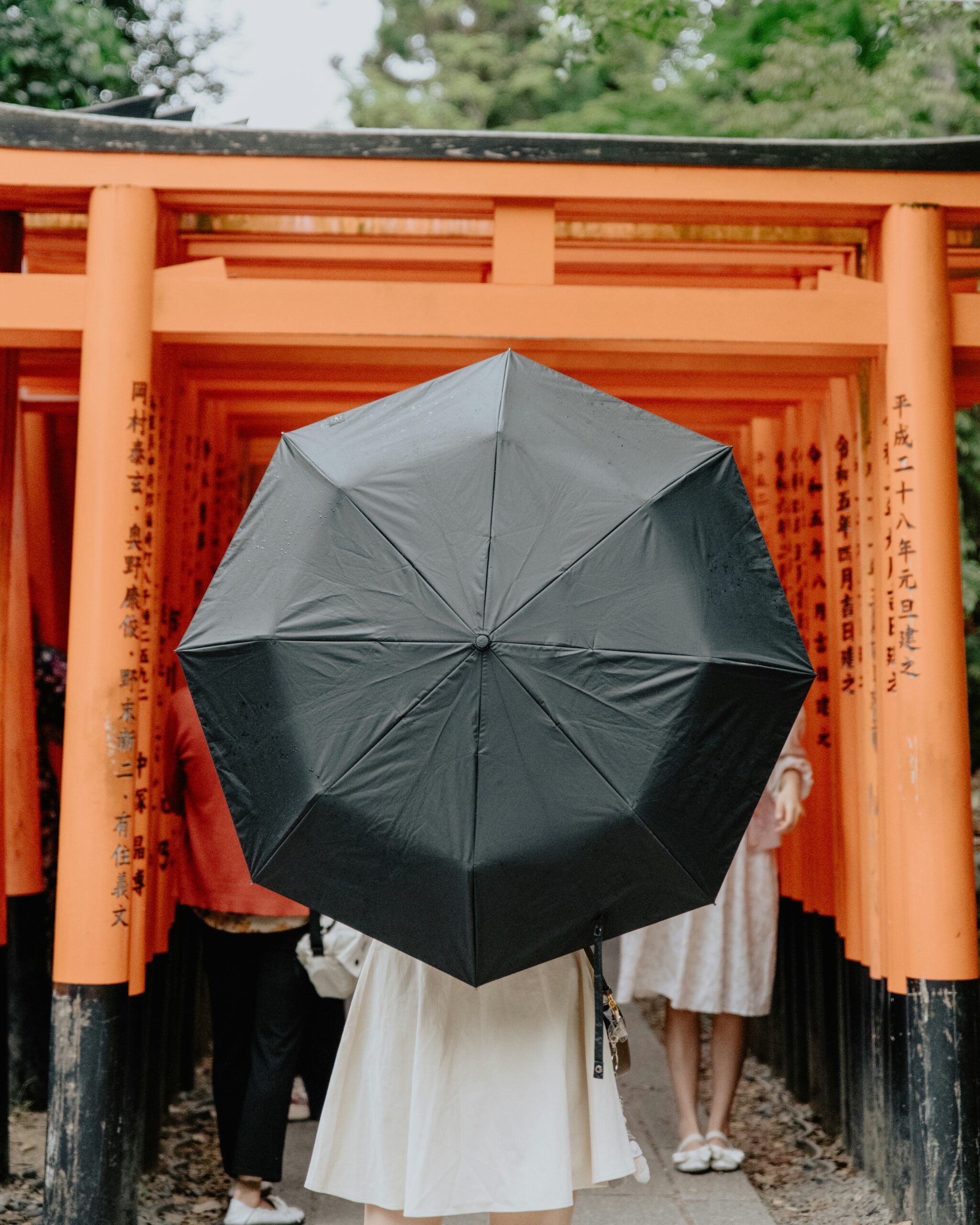
The historic Gion district transforms into a mystical wonderland after rain, with lanterns reflecting on wet cobblestones
Rain in Kyoto transforms the city into a serene masterpiece. The mist rolling over temple rooftops, the glossy shine of wet cobblestones, and the gentle sound of rainfall against bamboo groves—all of these create a poetic mood. Many visitors avoid rainy days, but locals know that Kyoto in the rain is pure magic.
Unlike in Tokyo, where the rush of modern life continues undisturbed, Kyoto’s rain slows everything down. The atmosphere becomes quieter, more intimate. Temples like Kiyomizu-dera and Nanzen-ji feel mystical when the rain softens the scenery, and the usually crowded streets of Gion are calmer, offering better chances for stunning photos.
👘 Kimono in the Rain: Tradition Meets Nature

The elegant combination of kimono and wagasa creates a timeless cultural portrait
Wearing a kimono in the rain may sound challenging, but it’s actually one of the most beautiful ways to connect with Japanese tradition. The flowing fabric, combined with the gentle rhythm of rain, creates a cinematic experience.
Historically, people in Kyoto wore kimonos every day, regardless of the weather. Rain was never an obstacle—it was a natural part of life. By renting or wearing a kimono on a rainy day, you’re stepping into that history, experiencing Kyoto as it was lived centuries ago.
When paired with a wagasa umbrella, the effect is striking. The umbrella not only keeps you dry but also frames your outfit, creating a visual harmony that enhances every photo.
🛡️ What Is a Wagasa Umbrella?
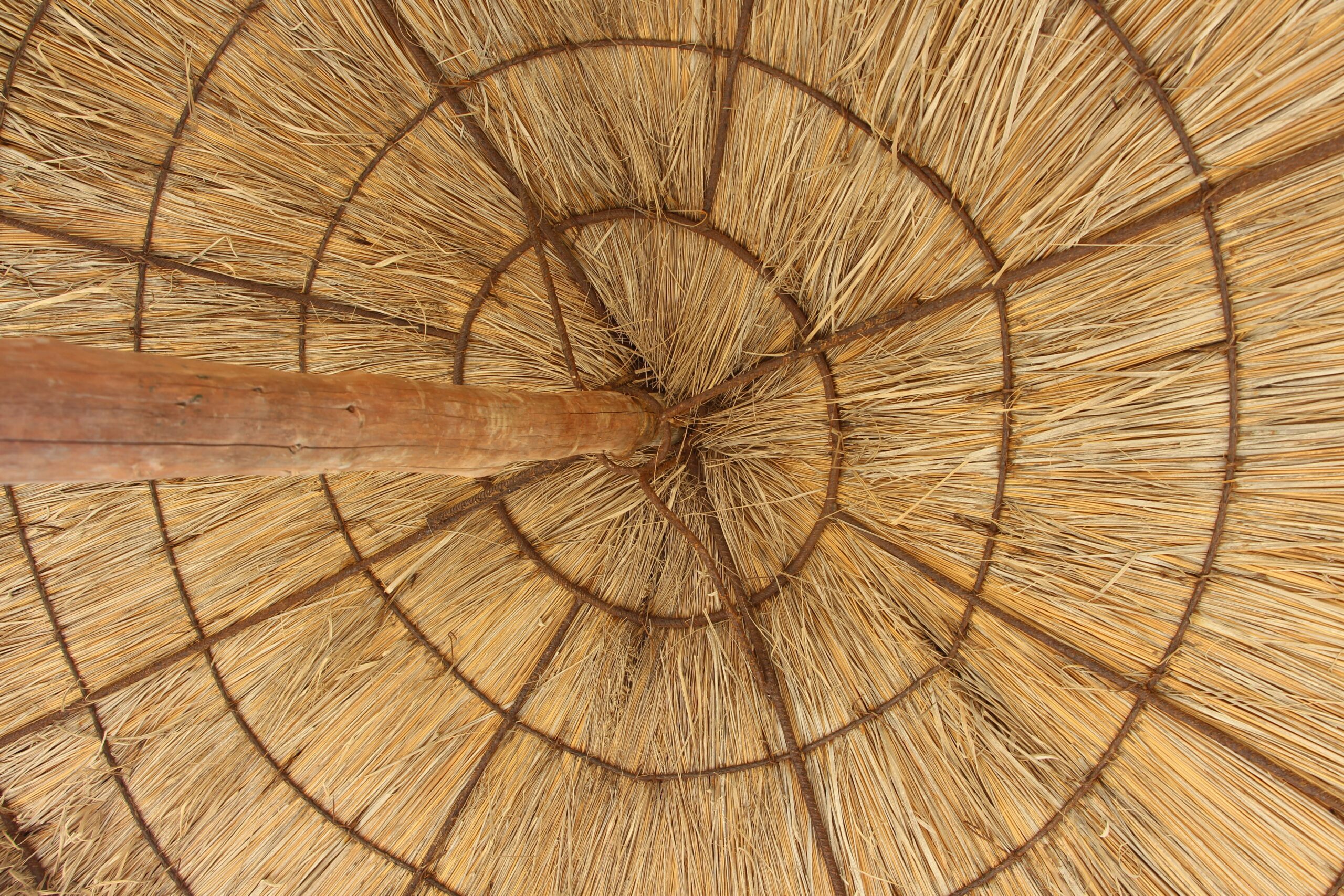
A traditional red Janome wagasa umbrella showcasing the intricate patterns and craftsmanship of Japanese artisans
A wagasa is a traditional Japanese umbrella made from bamboo, washi paper, and oil coating. Unlike modern Western umbrellas, wagasa umbrellas are crafted with intricate designs and vibrant colors, often featuring reds, purples, indigos, and natural bamboo shades.
There are different types of wagasa, each with its own purpose:
- Bangasa (番傘): A sturdy, everyday umbrella, simple and durable.
- Janomegasa (蛇の目傘): Recognizable by its concentric circle patterns. Popular for kimono wearers.
- Higasa (日傘): A parasol used for protection from the sun.
- Odori-gasa (踊り傘): Used in traditional Japanese dances and performances.
When walking in Kyoto, the janomegasa is the perfect choice. Its unique design not only provides shelter but also adds cultural authenticity to your kimono experience.
📸 Why Wagasa Umbrellas Are Perfect for Photography
Rainy days are often avoided by travelers who want sunny photos, but photographers know that rain creates magic:
- Soft Natural Light – Rain clouds act as a natural diffuser, eliminating harsh shadows and giving portraits a soft, elegant glow.
- Reflections on Wet Pavement – The streets of Gion or Pontocho shine under rain, creating mirror-like surfaces perfect for capturing artistic shots.
- Color Contrast – A red wagasa against a gray sky, or a purple umbrella in front of a mossy temple wall, creates stunning contrast.
- Authenticity – Rain adds realism and emotion to photos, telling a story instead of just showing a scene.
With a kimono and wagasa, your Kyoto photos go beyond simple travel pictures—they become timeless cultural portraits.
👉 See our portfolio and book your kimono photo session: AllPhotos Kyoto.
🏯 Best Kyoto Locations for Kimono + Wagasa Photos
Here are the top spots in Kyoto where a kimono and wagasa will shine, especially on a rainy day:
1. Gion District
The iconic geisha district, with its lanterns, tea houses, and narrow alleys, looks even more atmospheric when wet. A wagasa umbrella makes you feel like you stepped into a historical drama.
2. Kiyomizu-dera Temple
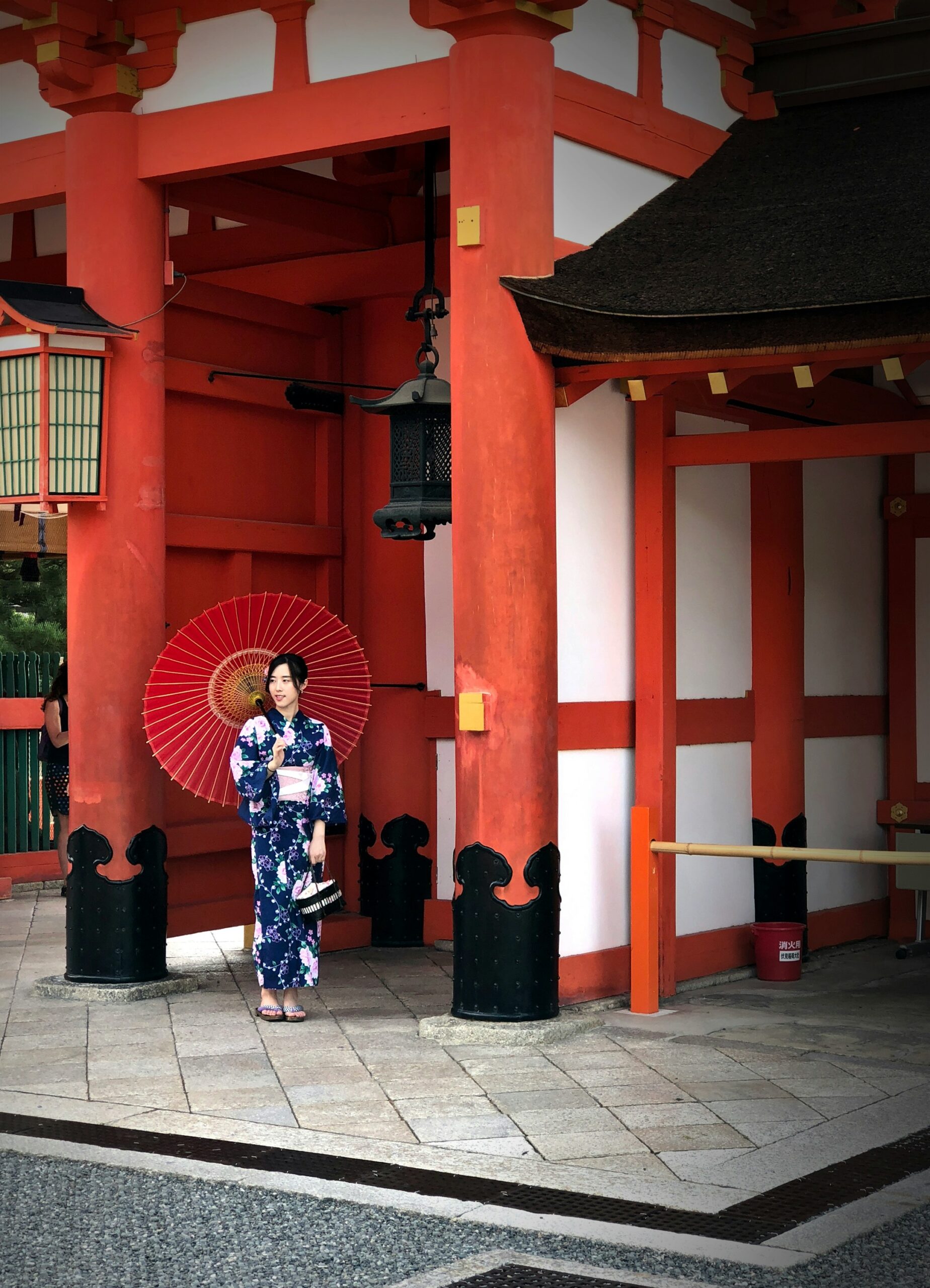
Kiyomizu-dera Temple shrouded in mist and rain creates a mystical backdrop for kimono photos
The wooden stage of this UNESCO World Heritage Site is breathtaking in the rain. Misty hills in the background make your kimono photos unforgettable.
3. Arashiyama Bamboo Grove
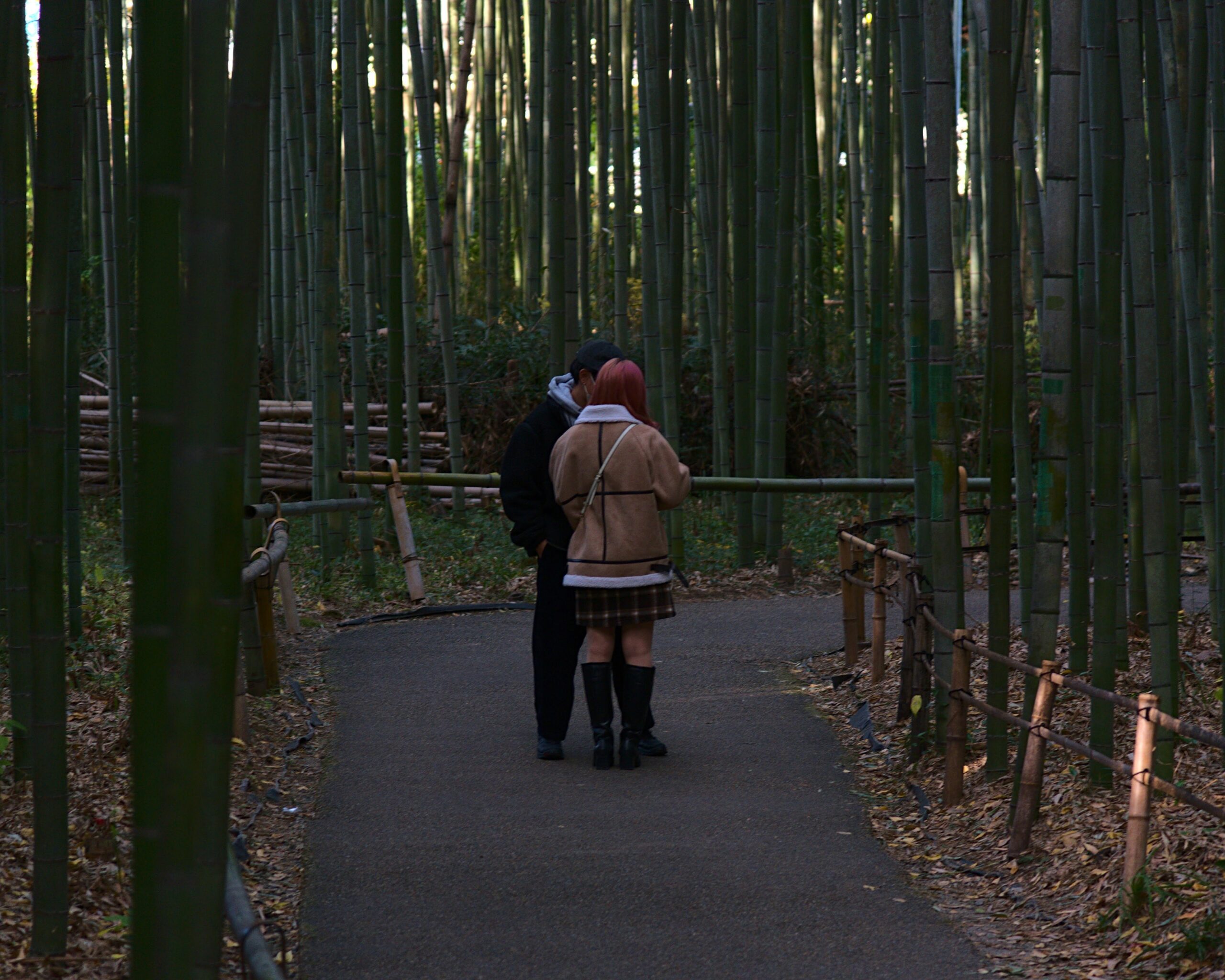
The Arashiyama Bamboo Grove becomes even more enchanting during rain, with enhanced natural acoustics
Rain amplifies the sound of rustling bamboo leaves. The wagasa adds a beautiful pop of color against the endless green stalks.
4. Yasaka Shrine
Kimono and Rain in Kyoto: How a Wagasa Umbrella Creates a Magical Experience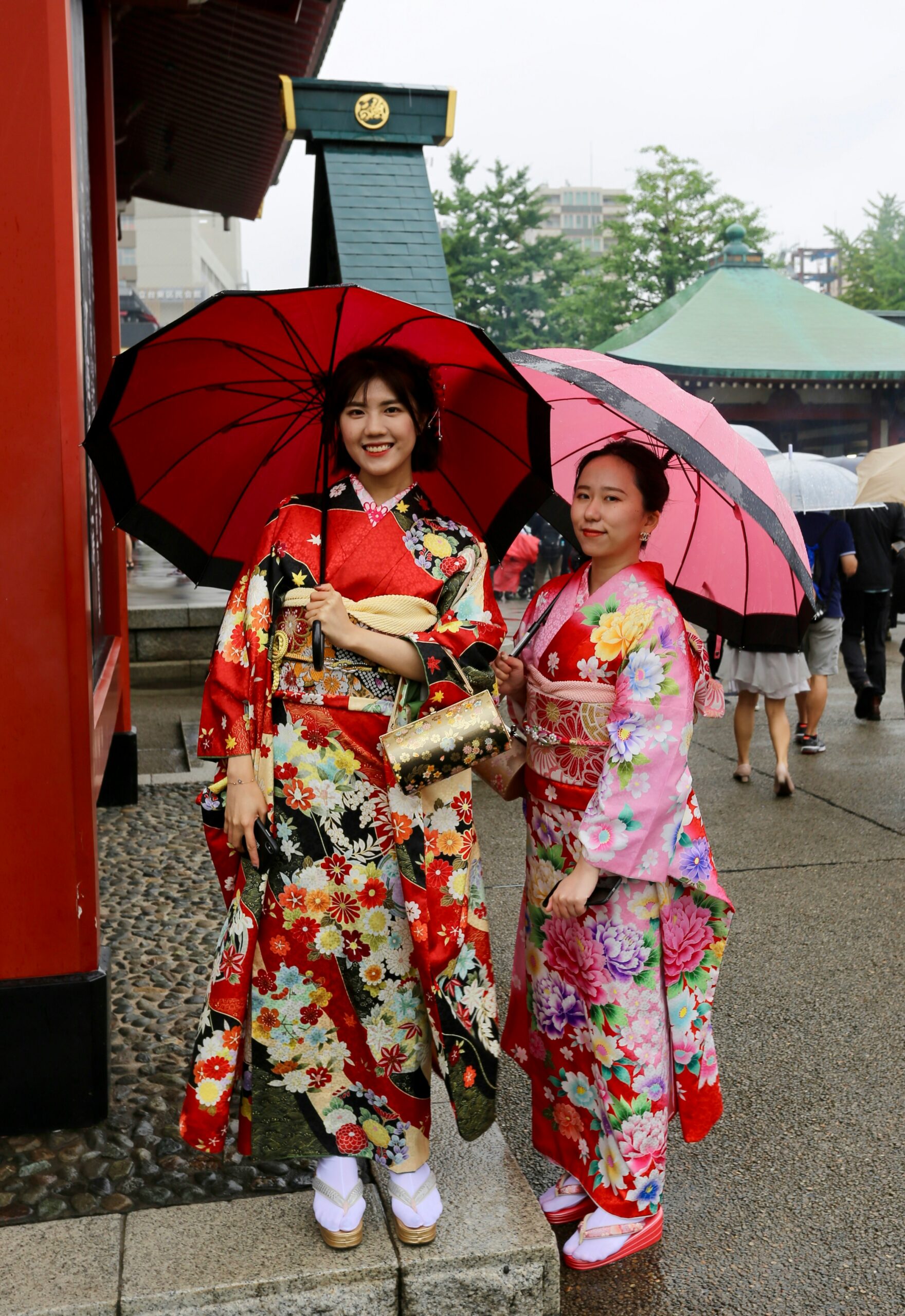
The vibrant vermilion gates of Yasaka Shrine create a striking contrast with traditional umbrellas
Located in Gion, this shrine is a favorite for kimono rentals. Its bright vermilion gates contrast beautifully with traditional umbrellas.
5. Philosopher’s Path
Lined with cherry trees and stone walkways, this canal-side path is incredibly romantic in the rain.
💡 Tips for Enjoying Kimono and Wagasa in the Rain
- Choose the Right Kimono Fabric – Thicker silk or polyester blends resist moisture better. Avoid thin fabrics.
- Wear Zori or Geta Sandals with Tabi Socks – Traditional footwear keeps your feet comfortable even when streets are damp.
- Hold the Umbrella Properly – Wagasa umbrellas are larger than modern umbrellas. Hold them slightly tilted for a photogenic effect.
- Bring a Small Modern Umbrella as Backup – Use wagasa for photos and cultural experience, but keep a lightweight umbrella for practicality.
- Book a Photographer – Rainy-day photos are tricky. A professional ensures your memories are beautifully captured.
🌸 Conclusion: Rain Turns Kyoto Into Poetry
Kyoto is enchanting in all weather, but rain reveals a side of the city many tourists never see. Wearing a kimono and carrying a wagasa umbrella allows you to fully immerse yourself in Japanese culture, blending tradition, beauty, and nature.
Far from being an inconvenience, rain becomes a partner in creating unforgettable experiences and photographs.
👉 Don’t let the rain stop you—embrace it. Make your Kyoto journey truly special with a kimono and wagasa, and capture memories that will last forever.
📷 Book your kimono photography session today: AllPhotos Kyoto.


コメント